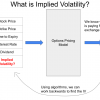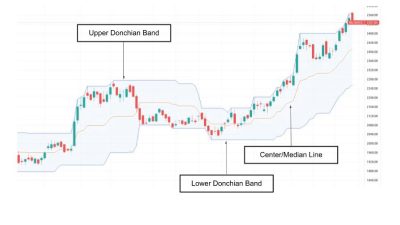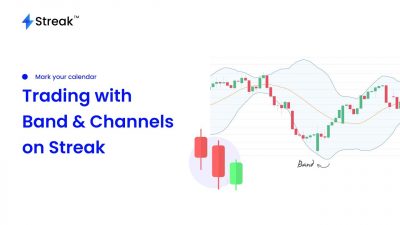Moneyness is a concept that is most usually associated with put and call options, and it indicates whether the option would profit if exercised immediately. An option contract’s moneyness is a classification mechanism that categorises each option (strike) as In the Money (ITM), At the Money (ATM), or Out of the Money (OTM). This classification aids the trader in determining the characteristics of different strike prices and which strike to trade in a given market situation. It can be measured in relation to the current price of the underlying stock, or its future price.
Intrinsic value
Options Price (Premium) = Intrinsic Value + Time Value. When a stock expires, its extrinsic value is zeroed out, leaving only the intrinsic value.
Intrinsic value is the amount of money that each given option would be worth if it were exercised today. Intrinsic value is always a positive value or 0. It can never be negative. Option premiums are made up of two components: intrinsic value and extrinsic value.
Intrinsic Value of a Call option = Spot Price – Strike Price (0 if the result is negative)
Intrinsic Value of a Put option = Strike Price – Spot Price (0 if the result is negative)
Let’s consider the following example:

You purchased a 100 strike call option on XYZ Stock, which is currently trading at 105. You can now buy the stock for 100 and sell it at 105 if you are allowed to and choose to exercise your contract today rather than waiting for it to expire. So here’s how much money you could make:
105.00 (Spot Price) – 100.00 (Strike Price) = Rs. 5.00 (Ignoring the premium).
Here, Rs. 5.00 is the intrinsic value of the 100 CE with the spot at 105.
Moneyness of Call Options:
Any given options contract falls under one of the following three broad categories:
In the Money – If the intrinsic value of the contract is higher than 0
At the Money – The strike price closest to the underlying price
Out of the Money – If the intrinsic value of the contract is 0
That means, all the Call option strikes below the underlying price are categorized as ‘In the Money’ while all the Call Option strikes above the underlying price are categorized as ‘Out of the Money’.
All the Put option strikes below the underlying price are categorized as ‘Out of the Money’ while all the Put Option strikes above the underlying price are categorized as ‘In the Money’.
Example:
With NIFTY at 18113, 18100 is At-the-money, All the call strikes below 18110 are In-the-money and all the call strikes above 18100 are Out-of-the-money.

Moneyness of Put Options:
The same broad categories apply to put options as well.
In the Money – If the intrinsic value of the contract is higher than 0
At the Money – The strike price closest to the underlying price
Out of the Money – If the intrinsic value of the contract is 0
Example:
With NIFTY at 18113, All the Put option strikes below the underlying price are categorized as ‘Out of the Money’ while all the Call Option strikes above the underlying price are categorized as ‘In the Money’’.

Selecting Strikes on the Streak Platform:
Strike selection is fairly simple on the Streak platform using Dynamic contracts. We have already discussed about dynamic contracts in our webinar: Introducing Dynamic Contract – Analyze & Trade across multiple scrips
You can also refer to one of our articles here: http://35.200.218.105/what-is-dynamic-contract-and-creating-a-short-straddle-on-banknifty-in-streak/
Let’s take an example of a naked put options selling strategy where we will be selling out-of-the-money put option to collect premium expecting it to expire worthless. Lets see how we can implement this strategy on Streak:

Link to the strategy: https://public.streak.world/in/Zf6ovik7kd
The strategy sells a put option 9 strikes below ATM strike on Tuesday morning at 9:20 and the position is carried over till the expiry. We have created the dynamic contract with the following specifications:

As you can see in the strategy, to enter at a specific time, we have used the ‘Candle Time’ Indicator. You can learn about this indicator available on Streak at: http://35.200.218.105/time-based-indicators-and-conditions/
Conclusion:
Moneyness of the options contracts solely depends on its intrinsic value which is determined by the strike price and the underlying price. In-the-money options have Intrinsic as well as Extrinsic value while out-of-the-money contracts have only extrinsic value. Out-of-the money contracts will be worthless on the day of expiry as the extrinsic value shrinks to zero.s









